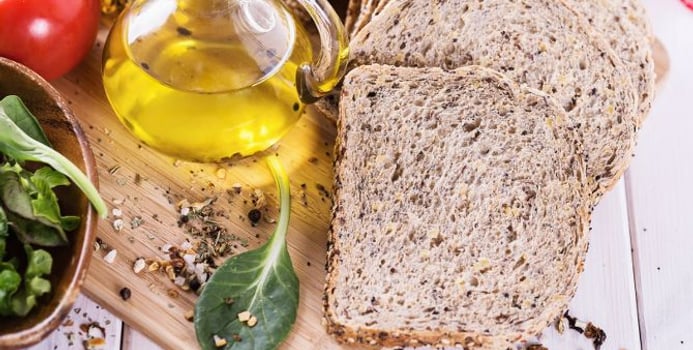We love to indulge, and from the custom to socialize and celebrate by having meals in restaurants has sprouted an epidemic of enormous portion sizes. Have you been our to eat lately? A single entrée is usually enough to feed an entire family - not to mention that it contains nearly enough calories to sustain an adult for a full day. We have grown accustomed to eating larger portion sizes over the years, and now, even meals at home tend to be excessive.
Why are we eating so much? First, we often rush through meals, not giving our brains the time to register that our appetites are sated. As a first step in controlling how much you eat, slow down. Pay attention to what you're putting in your mouth, and even take the time to enjoy it! Secondly, plan to eat low-calorie nutrient-rich food at the beginning of a meal. If you fill up on salad, clear soups, and raw vegetables, you won't feel as hungry when you get to the main dish.
How to Handle Cravings
If you have frequent cravings, you may have a condition that makes the desire to eat much stronger than your willpower. If you crave salty foods, it is usually a sign of adrenal stress and fatigue. If you have Candida, for example, you will have very strong cravings for refined carbohydrates: sweets, sugar, breads, pasta, etc. Sugar is very addictive as well, and the habit of eating a food that raises the blood sugar contributes to a low blood sugar level about two hours afterwards. A high spike in blood sugar is accompanied by a crash, which results in a stronger desire for yet another sweet to pick up the lethargic, tired feeling.
Developing Self-Control
To develop and build self-control, you must start by clearly defining your health goals. This step will prevent you from meandering all over the place with your dietary choices and make you very conscious of everything you put into your mouth. Use a food journal to keep track of everything you eat and as a reminder of your health, dietary, or weight loss goals. Usually, it is best to completely avoid the food items that will not work in conjunction with your goals. For example, you might plan to eat just a thin slice of cake or just a handful of potato chips, but the forbidden taste of a no-no food might trigger you to keep going. You have been depriving yourself of this treat, so you might feel overwhelmed by how good it tastes and want more. Soon, you will feel regret or even self-loathing as you realize that you have "blown it," but then you may think, "Well, if I've already blown it, I might as well really blow it!" Before you have time to think through your decisions, you'll be holding an empty bag of chips.
To get off this rollercoaster, pay close attention to the serving sizes on the labels of foods and drinks you consume, keeping in mind that many of those guidelines and percentages are listed as part of a 2000-calorie-a-day diet. Find out how much a "serving" of cookies is, remove only that number from the package, and put the box away! Also, use tools like measuring cups, a food scale, and portion size charts to ensure that you stick to your weight loss plan or other health goals.
Barbara Bates is a Registered Nutritional Consulting Practitioner, Registered Orthomolecular Health Practitioner, Certified Personal Trainer, Reiki Practitioner and CancerGuide. She holds a Masters Degree of Applied Science in Holistic Nutrition and runs a wellness practice in Canada. Barbara is specifically trained in diagnosing and correcting the underlying root cause of health concerns rather than treating the symptoms and her nutrition services are offered over the internet to assist those in all areas of the world. To contact Barbara, please visit innerbalancewellness.com or contact her via email at [email protected].



